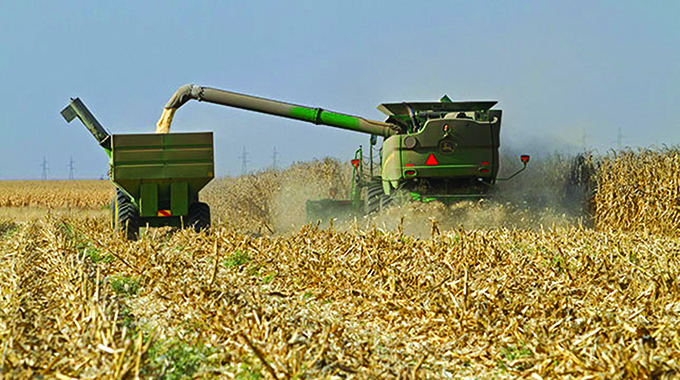
Business Reporter
The Agricultural Marketing Authority (AMA) has reissued $5 billion worth of agro-bills, with fresh terms, under the first issue of the $20 billion the authority intends to raise for grain purchases.
AMA had announced last week when it issued the initial agro-bills that it was targeting to raise $5 billion under the first batch.
“The Agricultural Marketing Authority (AMA) intends to issue AMA Bills of up to $5 000 000 000 to finance the purchase of maize for the 2021 buying season through the grain marketing board.
“The initial offer was opened on July 5, 2021 and AMA seeks to reissue the bills with revised terms, thus suspending the current issue,” the agri-commodities marketing entity said.
Under the new terms, AMA said interest rate will be 19 percent per annum with tenor of 270 days from the first day of allotment. The bills have prescribed asset, liquid asset and tax exemption status.
The agro-bills, a tap issue, had originally been issued at an interest rate of 21 percent per annum and tenor of 365-day tenor, which have both been reduced under the new issuance.
AMA said CBZ Holdings, as the financial advisor, invited with immediate effect corporates and individuals to subscribe for the agro-bills with applications required in tranches of $1000 000.
AMA was set up by the Government primarily to promote agricultural production of strategic crops such as tobacco, cotton, sugar, soya beans, maize and barley.
Although tobacco has successfully managed to attract private funding, the same story cannot be said on other crops such as cotton that struggle to get private funders.
Given the centrality of maize to national food security, the Government has remained the major financier and buyer of the commodity through the Grain Marketing Board with AMA facilitating resource mobilisation from the market.
Zimbabwe is expecting to harvest 3 million tonnes of cereals during the 2020/21 summer cropping season, the highest yield in 20 years, the Second Round Crop and Livestock Assessment report revealed recently.
A surplus of over 820 000 tonnes of cereals is expected this marketing season, the highest yield since the 2000/01 farming season.
The assessment report has revealed that cereal production is estimated at 3 075 538 tonnes against a national cereal requirement of 1 797 435 tonnes for human consumption and 450 000 tonnes for livestock.
According to the final assessment report, estimated maize production stands at 2 717 171 tonnes, which is a significant rise from the 907 628 tonnes produced in the 2019/2020 season.
The report reads: “In addition to the good rainfall season in the 2020/2021 season, the practice of climate-proofed technologies (Pfumvudza/Intwasa) significantly contributed to the increased yield levels supported by well-coordinated input programmes.
“There was marked improvement in maize yield across the country as a result of increased rainfall and good distribution from the onset of the season in November 2020 to the end of February 2021,” reads the report.
It states that maize production was dominated by the communal sector, which contributed 36 percent although yield levels were low compared to other sectors.
It has been noted that in some areas, yield levels were suppressed because of leaching during the months of December and January. Traditional grains production is estimated at 347 968 tonnes, which is an increase of 128 percent compared to the 152 515 tonnes produced by farmers in the 2019/2020 season.
Sorghum production is expected to be 244 063 tonnes which is 135 percent more than 103 684 tonnes obtained during 2019/2020 season.
There was also an increase in finger millet production with farmers expected to harvest 13 223 tonnes registering an increase of 35 percent from the 9 799 tonnes produced during last summer’s cropping season.
Pearl millet production increased by 132 percent from last season’s 39 032 tonnes to 90 683 tonnes while groundnut production increased from 87 498 tonnes to 208 864 tonnes, a 139 increase attributed to a good rainy season.
Sunflower production also increased by 4 751 tonnes in 2020/2021 season, from last season’s 9 447 tonnes to 14 198 tonnes mainly owing to good and well distributed rains and increased Government input support towards the crop.
